Rhythmic Gymnastics: Definition, Elements, Types, History
Is gymnastics that uses music called rhythmic gymnastics or rhythmic gymnastics?
Most people think that exercise for pregnant women, aerobic exercise, TKJ gymnastics and other exercises that use music as a guide are rhythmic gymnastics.
Indeed, many such gymnastics use music as a motion guide. But rhythmic gymnastics or rhythmic gymnastics is not such a gymnastics.
Table of contents
Definition of Rhythmic Gymnastics
 SSix rhythms is one of the branches of artistic gymnastics, where a person or group shows the choreography that blends with acrobatics, modern dance and ballet or gymnastics without tools such as balls, ropes, clubs and hoops.
SSix rhythms is one of the branches of artistic gymnastics, where a person or group shows the choreography that blends with acrobatics, modern dance and ballet or gymnastics without tools such as balls, ropes, clubs and hoops.
Rhythmic gymnastics is gymnastics that is competed in an olympiad and also international rhythmic gymnastics.
Aerobic gymnastics such as gymnastics carried out for fitness and body health in gymnastics, participants or groups perform gymnastic movements guided by a gymnastics guide
From the first rhythmic gymnastics is mostly done by women only. And Japan is the pioneer for men to be included, although this is only done in the country of cherry blossoms.
Rhythmic gymnastics is dominated by women only because it was created in Europe by experts in the arts.
The development of rhythmic gymnastics took many movements from ballet, which at that time was synonymous with women's ballet.
Therefore, rhythmic gymnastics, which was originally performed by women, has now become synonymous and has become a women's sport that has become a tradition.
Principles of Rhythmic Gymnastics

Rhythm
As the name implies, rhythm in gymnastics is very important.
Rhythm is not always about music but when the rhythm of the body makes a movement, that is when athletes do gymnastics moving using a fast tempo, and when slow and medium various types of mobility and levelity her body.
Music in this case can provide assistance or nuance for the athlete's appreciation in his body movements which are closely related to motion and emotional problems.
Continuity of Motion
Movement continuity with a series of movements that are united in the rhythmic gymnastics choreography that is competed.
Movement in rhythmic gymnastics is not formed from the combination of several types of movements.
The series of movements are created from strong concepts and theatrical ideas. The continuity of the choreographed movements seems to flow and carries the story conveyed by body movements.
Body Flexibility
Body flexibility is also very important in rhythmic gymnastics.
Flexibility in question is the body's expertise in performing and creating various types of using tools or not using tools.
Even though he has become a professional gymnast, he will never finish training his body flexibility.
Types of Rhythmic Gymnastics
In the international event, rhythmic gymnastics is divided into two types of categories, namely individual and group categories:
Individual
Rhythmic gymnastics performed by only one athlete who shows his choreography using a tool or not using a tool.
Group
Group rhythmic gymnastics is different from individual rhythmic gymnastics, in group rhythmic gymnastics athletes use only one type of tool or several types of tools to show their choreography.
Kinds of Rhythmic Gymnastics

Rhythmic Gymnastics with the Ribbon Alat
In this type of gymnastics, each athlete is allowed to use a tool, namely a ribbon which is played by various types of movements, styles and ways.
For example, small round patterns, large rounds, wrapped around the body and then released again, thrown and many others.
Rhythmic Gymnastics with Balls
If the ball is used by an athlete who performs alone or individually, only one ball is used in the stage.
However, on the stage, athletes may only use one ball that is used by each person.
But one athlete may play more than one ball, namely by using his friend's ball.
The ball can be played by rolling, throwing, and also various types of gestures or movements and others.
The more difficult the movement, the higher the points you will get.
Rhythmic Gymnastics with String Tool
The use of ropes in rhythmic gymnastics is almost the same as using ribbons, which can be used with various styles and movements.
Rhythmic Gymnastics with Hoops
Hoops are often used in rhythmic gymnastics by being thrown and caught in various ways or by rotating them in various parts of the body.
And certain body gestures such as rotating the wrist and the athlete also turning the body on one leg.
Rhythmic Gymnastics with Mace
Each rhythmic gymnast will hold two clubs that can be held in one or two hands.
The mace is played as if thrown and body parts follow various types of movements from difficult to difficult.
Elements of Rhythmic Gymnastics
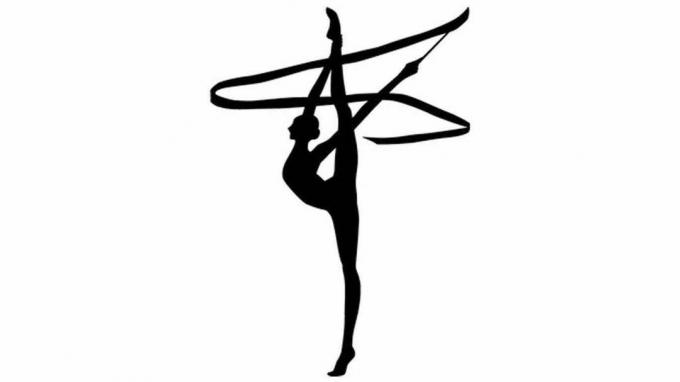
The following are the basic elements in rhythmic gymnastics that must be mastered by rhythmic gymnastics athletes, namely:
Power
Strength is a foundation for rhythmic gymnastics athletes. Without good strength, of course, it would be impossible for rhythmic gymnastics athletes to perform difficult movements.
Flexibility
Flexibility is one of the main things in rhythmic gymnastics because after all, rhythmic gymnastics is very thick with ballet and acrobatic nuances.
Because ballet and acrobatics show flexible movements and body gestures followed by extreme joints and body curves.
Balance
Balance is also one of the important things in rhythmic gymnastics which is useful for carrying out movement choreography.
Balance is needed during difficult movements such as turning on one leg and catching the ball.
Skills
One that is assessed is the power of creativity or gymnastic skills that create a choreography of motion.
In general, in rhythmic gymnastics competitions, many variations of movement will get more points.
Especially when athletes can create new movements that have aesthetic value and difficult movements.
Accuracy
Good rhythmic accuracy is needed in rhythmic gymnastics because the athlete does not only count the pattern of steps in place.
And also not counting the time tools are thrown and to be caught again. But it must also be in rhythm with the music that accompanies the movement.
Flexibility
Dexterity shows that the depth of practice that has been passed because that flexibility can only be obtained by means of a choreography that has been prepared and regular practice.
This flexibility requires improvisation when the performance takes place.
The flexibility in question is not only from the body part, but also the response that is carried out in various ongoing things.
Beauty.
Beauty is one of the most important points because rhythmic gymnastics is born from the area of performance and is one of the main elements in rhythmic gymnastics.
Rhythmic Gymnastics Core Movement

The core movements in rhythmic gymnastics are the basic movements that every gymnast must have. From these movements, he can then create his own rhythm and choreography.
In these basic movements, there are 3 basic movements that must be possessed, namely floor gymnastics movements, acrobatic movements, and dance movements such as ballet in particular.
Here are some types of gymnastic movements that must be mastered by rhythmic gymnastics athletes:
- Roll front and back movements either starting from the bottom or from a standing position.
- The roll is like a roll movement but uses the back as a pedestal on the track, which can be front, back and side.
- Side and front splits with a split position and sitting in a standing position.
- dear
- Front or back flip.
- Handstand
- wheeling
- Headstand
- Candle attitude
- Flexibility exercise
- Ballet dance basics
- basic movements in yoga posture
The movements above are some examples that can be learned in rhythmic gymnastics.
Therefore these movements are very important in the basis of creating complex movements and also using gymnastic tools in rhythmic gymnastics.
Movement Named Rhythm with Tools
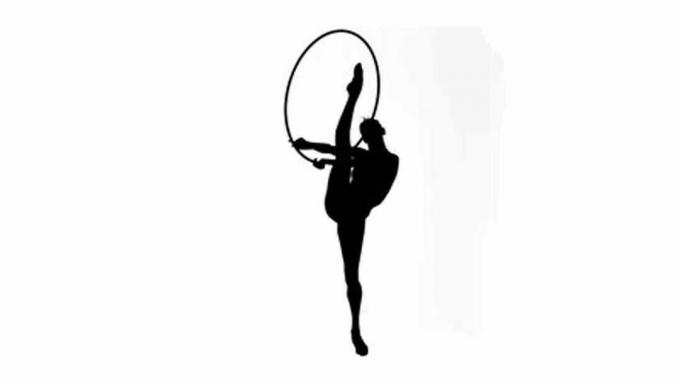
Rhythmic gymnastics movements with tools focus on the tools used such as balls, clubs, ropes and ribbons. The following are examples of rhythmic gymnastics movements using tools that have been done by rhythmic gymnastics athletes:
- Athletes enter the area and prepare the equipment as well as prepare with poses, positions and prepare the tools that will be used in the movement. Athletes will move when new music is playing and will not move if music accompanies the stage. This is the initial movement that is commonly done by gymnastics athletes.
- If gymnastic athletes use a tool such as a ball at the beginning of a gymnastic movement, the athlete usually throws the ball at a certain height. Then the body is rotated several times using the right hand position on the right leg straight and tiptoe on the shaft rotation, head straight ahead, left leg bent 180 degrees knee parallel to hip, and heel forming position points. When it has rotated several times and the ball falls on the right hand in a raised position and the right palm is open, it is ready to catch the ball.
- With the ball, the athlete can also throw the ball upwards to the front and the athlete rolls or rolls several times in the direction of the falling ball. Then the ball can be caught by means of two hands, one hand or it can also use both soles of the feet with the position of the body leading to a candle stance.
- When the athlete uses the ribbon, there are several movements, such as the athlete spinning like number 2 then one of his hands holding the ribbon stick rotates the ribbon until it forms a certain pattern.
- Rhythmic gymnastics using a band can also move the band and lower body split position or it can also stand on one leg and one leg straight 180 degrees.
- Rhythmic gymnastics using a rope is also almost the same movement as using a ribbon.
- Gymnastics athletes use the club movement, namely the athlete throws the club up and then the athlete overturns where he is stood up and when time was over the somersault was ready for an elaborate pose and ready to catch the club with his hand.
- Gymnastics athletes use hoops, usually the athlete rotates the hoop with one leg in a sky position so that it can be seen In that position, one of his legs becomes a support for the body and his hands, then the other leg is lifted up and rotates hoop.
Above is a small example of a gymnastic movement using a tool. There are many more movements that have been done by gymnastics athletes in the world.
Rhythm Gymnastics Tool
Tools that can be used in rhythmic gymnastics in accordance with the regulations of the Federation Internationale Ce Gymnastique (FIG). There are several tools such as ribbon (ribbon), ball (ball), rope (rope), hoop (hoop), mace (club).
The following is an explanation of the rhythmic gymnastics tools:
Ball (Ball)

The ball used in rhythmic gymnastics has a diameter of 18-20 cm. The material of the ball is usually rubber or plastic with a ball weight of 4000 grams.
The ball can be played by throwing, holding, or rolling with variations or on the surface of the body.
The ball must not fall to the floor while doing the choreography.
Ribbon (Ribbon)
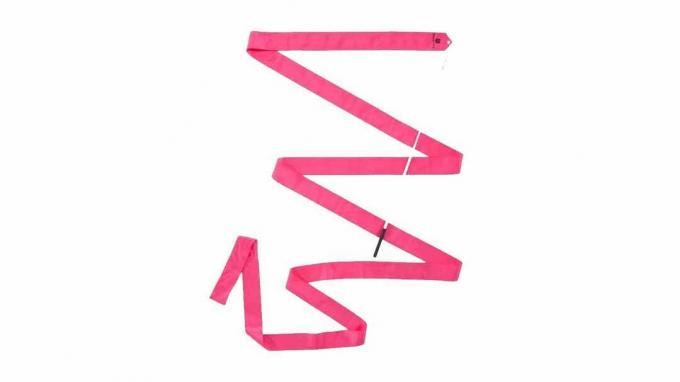
The ribbon used in rhythmic gymnastics is made of fine materials such as satin and is given a short stick with a diameter of 1 cm and a length of 35 cm.
The sticks are made of plastic or wood with the appropriate color such as the color of the ribbon.
The ribbon has a length of 5 meters for juniors and 6 meters for seniors. The width of the map is 4 to 6 cm with a weight of 35 grams.
The map can be played by turning, swinging, spiraling and many others, the ribbon accompanies the movements of the gymnastics athletes.
While performing the choreography, the gymnast must not drop the stick and make the ribbon tangle or tangle.
Rope (Rope)

The rope used in rhythmic gymnastics is made of soft and comfortable material for athletes to hold.
The rope is usually made of synthetic fibers which are colored to match the attractive gymnast costume. The length of the rope is adjusted to the posture of the gymnast.
That is by stepping on the rope and then both ends are measured from the tip to the gymnast's shoulder. The rope can be played in ways such as swinging in a circle, skipping, throwing and so on.
The rope must not fall to the floor accidentally or out of concept when performing acrobatic movements.
Hoop (Hoop)
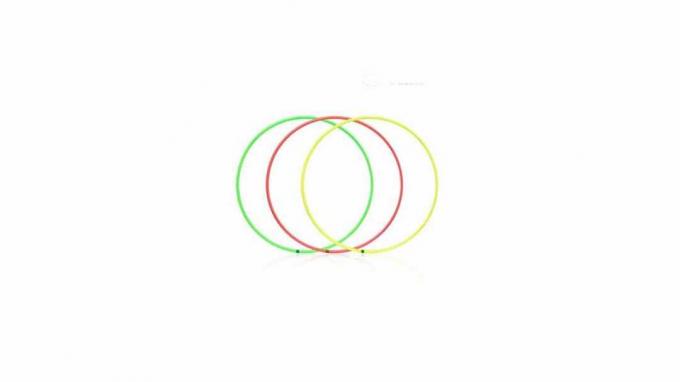
The size of the hoop that can be used is with a diameter of 51-90 cm with a minimum weight of 300 grams.
Hoops are usually made of wood or plastic. The color of the hoop can be natural or it can be adjusted to the costume of the gymnastics athlete.
The hoop can be played by throwing it and then catching it again, throwing it, rotating it with the arm, chest, neck and hips and there are still many movements that have been done by athletes gymnastics.
The Purpose of Rhythmic Gymnastics

The main goal of rhythmic gymnastics is to get the perfect score to win the match.
In addition, generally gymnastics choreography is a separate purpose that is useful for entertaining and making the audience amazed when they see it.
This rhythmic gymnastics requires strong physical endurance and also the creativity of the athletes to compete.
On the one hand, the gymnastics athletes must be disciplined to make the gymnastics athletes continue to be moved to pass the boundaries of their bodies.
The more difficult the movement is, it indicates the depth of the exercise that has been done before.
Usually the gymnast will get great satisfaction when crossing the line from himself and can create new movements or perform difficult movements.
Benefits of Rhythmic Gymnastics

One of the effects of rhythmic gymnastics is to make the athlete's body awake
his health and fitness.
In addition, the athlete's body is also maintained in proportion, strong, ready, flexible, lean, flexible and full of energy.
In addition, the benefits can also make the audience of gymnastics their own pleasure and can also invite the audience to do sports themselves.
Every gymnastic choreography movement has a reference function and knowledge of body movements.
This is important because it becomes the foundation for the creation of motion both in rhythmic gymnastics disciplines, floor exercises and also such as acrobatic circus or dance.
History of Rhythmic Gymnastics
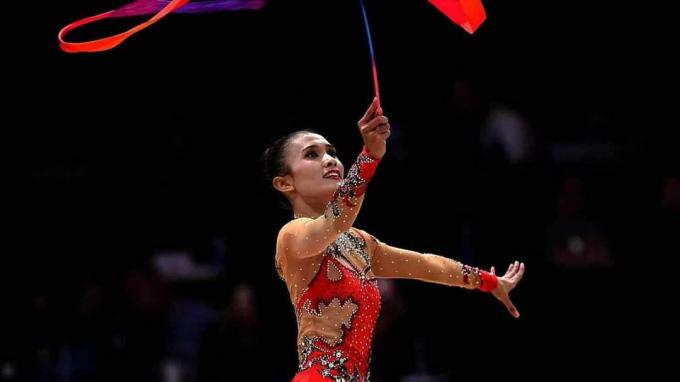
The history of rhythmic gymnastics begins with the ideas of Jean Georges Noverre in 1727-1810, Francois Delsarte (1811-1871), and Rudolf Bode (1881-1970).
The three people believe in the importance of using the body's expression of motion to create beauty by means of a certain series of motions.
The idea was then developed by Peter Henry Ling in the 19th century in a training system called the Swedish system.
From free movement promoted as Gymnastic Estitis where an athlete expresses himself through feelings and emotions with his body movements.
The idea was then further developed by Catharine Beecher, founder of the Western Female Institute in Ohio, United States in 1837.
Known as Grace Without Dancing, female gymnasts train to the accompaniment of music from simple movements to complex movements.
After that made many pioneers about the body, body movements, body expressions, and music with various types of styles.
In 1900 these styles were combined in the Swedish Rhytmic Gymnastics school and later many schools were developing similar things.
In 1929 Hinrich Medau founded a school in Berlin and created the idea of modern gymnastics which has basic differences from the previous styles, namely creating an artistic gymnastic movement system using tools (balls, ropes, ribbons, hoops, and balls). club).
So that the gymnastics looks like contemporary ballet, acrobatics or dance.
Rhythmic gymnastics competition began in 1940 which took place in Russia. FIG then included the gymnastics as one of the branches of gymnastics in 1961.
Initially, this exercise was called gymnastics and turned into rhythmic gymnastics and finally changed to rhythmic gymnastics or rhythmic gymnastics.
International competitions were first started in the sport for individual athletes in Budapest in 1963. And the group matches started in Denmark's Copenhan competition in 1967.
Gymnastics began to be held at the 1984 Los Angeles Olympics in individual classes, and group matches began in 1996 at the Atlanta Olympics.
